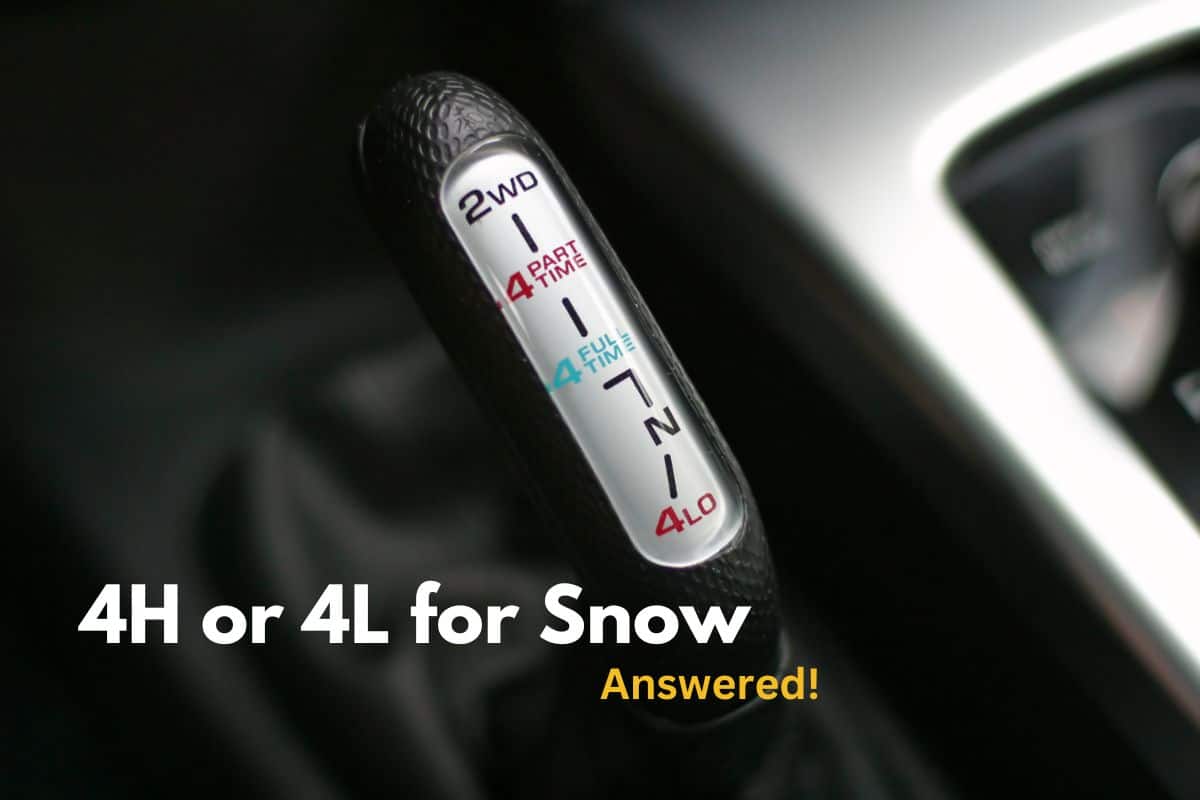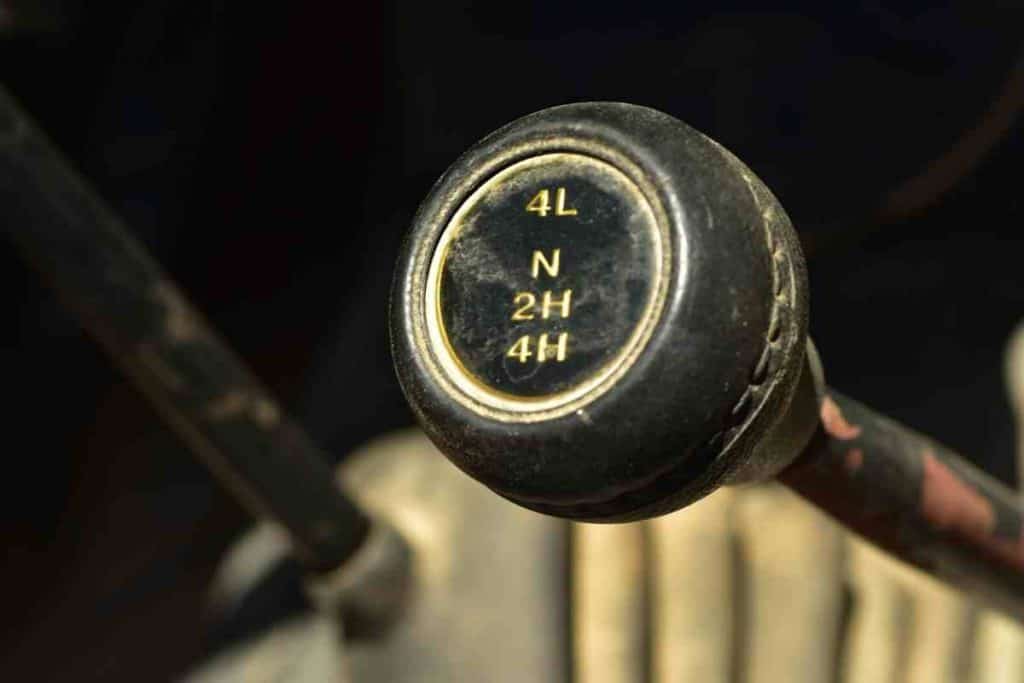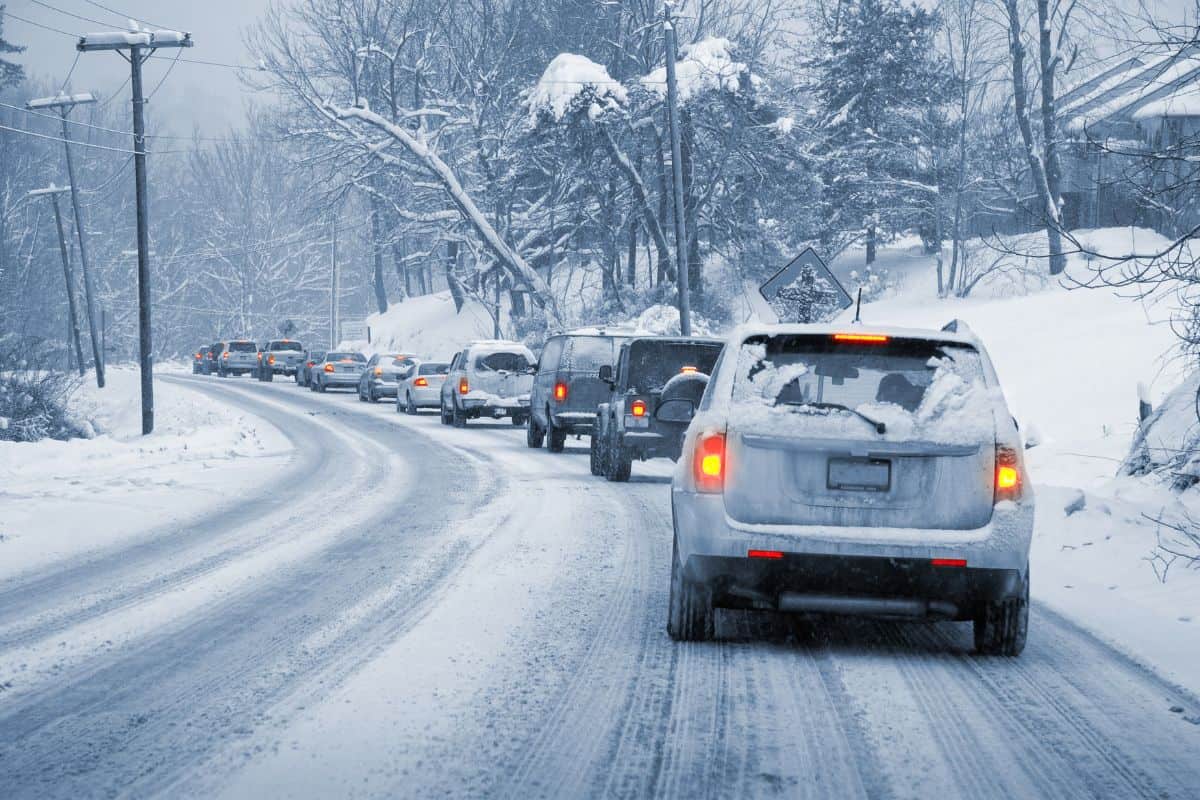Do I Use 4H or 4L to Drive in Snow? (ANSWERED!)
Many people find themselves driving 4×4 vehicles simply so they can handle their morning commutes to the office through the raging snows of winter. With so many different features available in 4x4s these days, it’s no surprise that many drivers don’t know the best mode to drive in when it snows.

They may end up finding themselves sitting in their Jeep, stuck in the snow. Or they may end up burning up their engines driving on a beautiful snowy day.
So what do you use to drive in snow, 4H or 4L? This article will explain how to drive with either one.
4H or 4L For Snow? Here’s the answer!
In moderate amounts of snow with low traction but when you can still maintain relatively normal driving speeds, use 4H, if you are in deep snow or a very low traction environment and staying at a very slow speed, 4L will give you the best ability to keep from getting stuck.
Both 4H and 4L engage your 4WD, allowing each wheel to rotate independently and giving you additional torque when you need it most.
4L offers much more torque than 4H; about 3 times more power. However, it can only be used at extremely low speeds or you’ll quickly wear out your drive train.
4H is useful when you need some help getting some traction, like on a regular ole’ snowy road.
But 4L is the only way to get some extreme torque to your tires. It’s perfect if you are stuck or about to drive up or down an extremely icy road.
What is 4H?

In a 4-wheel drive vehicle, the “4H” setting locks all four wheels at once.
Some cars have a separate switch to engage this mode, but activating cruise control will also activate the 4WD lock feature in some situations.
This mode is only meant to help drivers on slippery surfaces gain control of the vehicle.
The “4H” setting locks all four wheels at once so your car can have more traction if stuck on ice or snow, but it’s dangerous to use excessively or in normal conditions because it will wear out your drivetrain.
How to Drive a Car with 4WD in the Snow
Step 1: Put your transfer case into 4H. If you have a separate switch, turn it until the light comes on or the indicator says “4H.”
If you have an automatic transmission, push the button or turn the dial to 4WD. If you have a manual transmission, shift into first gear and press the button that says “4H” or turn the dial to 4H.
Step 2: Turn your steering wheel as far as possible in the direction of the skid mark left by your tires. This helps prevent loss of traction from going too far in the other direction.
Step 3: Gently apply your brakes to slow down. Your ABS should keep your car moving straight, but you risk locking up the wheels if you brake too hard or for too long. If this happens, lift off the gas pedal and then reapply it slowly.
🔔 Be The Smartest Automotive Enthusiast In Your Friend Group!
Twice per week you will get the latest automotive news making you the smartest and most informed automotive enthusiast in just 5 minutes.
Join 3.000+ Subscribers to Four Wheel Trends, FREE!
Step 4: Turn the steering wheel the other way as you step on the gas. This will help turn your car and avoid getting stuck sideways in the snow.
Step 5: Continue this process of turning and accelerating until your car is driving or at least moving forward.
Step 6: If you feel that the 4WD is not working, check to ensure it is turned on and not in a 4L setting. If your car is stuck in the snow, the transfer case into 2H or 4L to gain traction. Then try driving out of the snow again with the techniques listed above.

What is 4L?
In a 4-wheel drive vehicle, the “4L” setting puts all four wheels in a straight line. That means if one of your wheels loses traction, it will still have the power from the engine through to the other three wheels that are not slipping.
If you find yourself stuck in snow or sand, this is much better because at least one wheel will be able to gain some grip and help move you out of the situation.
It would be best to use this mode when you anticipate that you may need to gain some speed.
The only downside is that if one of your tires does lose traction, nothing will stop it from spinning and causing you to go nowhere fast.
So I would not recommend speeding in 4L unless T-Rex is chasing down no other option like you.
When to Use 4L?
If you get stuck in the snow, 4L is the way to get out.
It’s also excellent for hills because it can prevent your car from rolling back down while accelerating.
You should also deploy this feature on some slippery roads or when stopping on an incline.
4L is not for normal driving conditions, but having the car in this mode will allow you to use your gas pedal to gain some speed to help you rotate or regain traction.
This can be very helpful if one of your tires slips and all four wheels cannot gain any traction at all.
If you are stuck, putting your car in 4L will allow you to gain some speed to try and get your tires rolling.
Just be aware that it will increase your fuel consumption and is only meant to help you gain some traction.
The other advantage of this mode is that if one of the wheels does spin, it won’t catch up with the other three wheels, so it should remain easier for you to control the car.

What Do the Different Modes Mean?
Here is a list of the different positions you might find on your car’s gear selector.
2H
This is all-wheel drive with extra locking for off-road use. It prevents one tire from spinning while the other three can move. If you are stuck, 2H will prevent any movement at all.
4WD High
This is a four-wheel-drive with extra locking. It works best in off-road conditions where you need to use all four wheels for power and movement.
4WD Low
This is four-wheel drive with extra locking, but it’s intended for slow going off-road to give you more torque.
2WD
This means your car is in two-wheel drive and only uses the rear wheels for power. It will use the front wheels if they have a better grip on the ground.
Auto
This is everyday driving and sends power to the wheels that need it. Extra traction helps you control your vehicle under the most difficult of road conditions.
It also makes it easier for you to get out of a slippery situation. If one wheel does slip, 4-wheel drive and all-wheel drive will prevent it from catching up with the other three wheels.
4L
This is for everyday driving but will allow you to use your gas pedal to gain some speed to rotate or regain traction. It has a downside, though, because if one of your tires does slip, 4L will do nothing to prevent it from spinning and catching up with the rest of the car.
4H
This is for everyday driving and will prevent you from spinning while using your gas pedal to gain some speed. You can also engage 4-wheel drive while in this mode, but it is not necessary.
4WD Low
This mode locks the front left tire and the rear right tire, which can be helpful if one or two tires lose traction. It is not meant for driving on roads, only off-road conditions.
4WD Auto
This is a four-wheel drive with automatic lockers activated when the car senses slipping wheels on either side of the vehicle.
It’s meant to drive on all surfaces, but it also means you have to pay attention to how your car is moving because it will automatically switch between 2H and 4H. If you feel it’s not working for you, switch to a different model.
4H vs. 4L: Which One Should I Use?

You should use 4H if you are driving on a snowy or slushy road that is causing a moderate amount of slippage on your tires.
Once you have some traction, switching back to either 2H or whatever your usual driving mode is will be easier on your drivetrain.
If the road conditions are horrible or if you find yourself stuck, only then should you engage 4L to give you additional traction.
That said, driving at high speeds in snow or ice is never recommended and usually results in someone sliding off the road and slamming into a tree.
Last but not least, if you’re driving in snow or ice, it’s essential to know that 4H is for average-snowy conditions and 4L is best in extremely snowy conditions.
Related Reading
- Should I Drive In 4WD On Ice?
- 2h 4h 4l: 4×4 Truck and SUV Modes Explained!
- How to drive a 4×4 | 15 Must-Knows Tips
- What do H4 and L4 mean?
- Here’s How Fast Can You Drive In 4×4 High?
- Can You Switch To 4WD While Driving?
- What is the difference between 4X4 auto and 4X4 high?
- Should I drive in 4WD AUTO or 2WD?
- Is My Jeep Grand Cherokee Always In 4WD?
